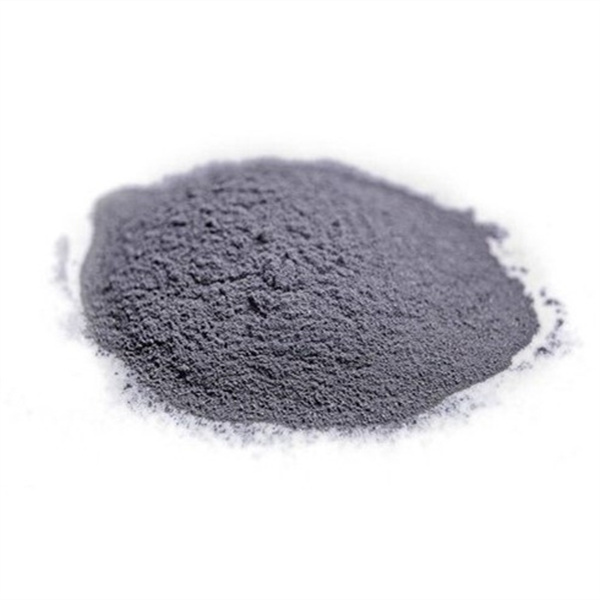铬镍铁合金三维打印概述
铬镍铁合金三维打印英科耐尔合金增材制造,也称为使用英科耐尔合金的增材制造,是指使用三维打印技术用英科耐尔金属粉末制造部件。因科镍合金是镍铬基超合金的一种,以高强度、耐腐蚀和耐热性能著称。铬镍铁合金三维打印技术的一些主要特点包括
- 可制造传统制造工艺无法实现的复杂轻质几何形状
- 良好的机械性能和材料性能可与锻造的铬镍铁合金部件媲美
- 可按需打印部件,无需模具或特殊工具
- 缩短小批量生产的准备时间,降低成本
- 通过拓扑优化创建优化形状和设计的能力
- 使用铬镍铁合金 3D 打印部件的行业范围广泛,包括航空航天、汽车、石油和天然气、医疗、化学加工
Inconel 3D 打印的一些优势和局限性值得考虑:
铬镍铁合金三维打印的优势
- 复杂的几何形状和轻质结构
- 量身定制的优化设计
- 减少浪费--只使用所需数量的材料
- 缩短交付周期,降低小批量生产成本
- 易于进行设计更改和迭代
- 合并组件,减少零件数量
- 按需购买零件,无最低订购量限制
铬镍铁合金三维打印的局限性
- 大批量生产的成本较高
- 与不锈钢等其他金属相比,制造速度较慢
- 可能需要进行后处理,以达到所需的表面光洁度
- 各向异性材料特性
- 受监管行业的资格和认证要求
- 用于 3D 打印的合格铬镍铁合金牌号数量有限

用于 3D 打印的铬镍铁合金类型
目前已开发出多种用于 3D 打印工艺的铬镍铁合金牌号。最常用的铬镍铁合金有
| 铬镍铁合金 | 主要功能 |
|---|---|
| 铬镍铁合金 718 | 优异的强度和耐腐蚀性能,最高可达 700°C。最常用于航空航天部件。 |
| 铬镍铁合金 625 | 具有出色的耐腐蚀性、良好的可焊性和高达 980°C 的强度。用于化学加工和海洋应用。 |
| 铬镍铁合金 825 | 良好的抗氧化性和耐腐蚀性。用于石油和天然气部件、发电厂。 |
| 铬镍铁合金 939 | 高强度镍合金,稳定温度可达 1095°C。用于燃气涡轮发动机部件。 |
其他具有 3D 打印潜力的铬镍铁合金:
- 铬镍铁合金 X-750
- 铬镍铁合金 909
- 铬镍铁合金 939ER
铬镍铁合金三维打印工艺
有几种增材制造工艺可用于打印铬镍铁合金超级合金:
| 过程 | 如何使用 | 益处 | 局限性 |
|---|---|---|---|
| 粉末床融合 - 激光 | 激光选择性熔化粉末层 | 良好的精度和表面光洁度 | 相对较慢 |
| 粉末床聚变 - 电子束 | 电子束熔化粉末层 | 构建速度比激光更快 | 真空室要求 |
| 定向能量沉积 (DED) | 聚焦热能源在沉积过程中熔化金属粉末或金属丝原料 | 可通过添加材料对零件进行修复和涂层 | 表面粗糙,需要后处理 |
| 粘结剂喷射 | 液体粘接剂可选择性地粘接粉末颗粒 | 相对快速、低成本 | 密度和强度较低,需要渗透 |
关键工艺参数: 激光功率、扫描速度、舱口间距、层厚度、构建方向、支撑结构、预热温度和后处理步骤。需要对每种铬镍铁合金的工艺参数进行优化,以获得所需的性能。
铬镍铁合金三维打印的应用
使用快速成型铬镍铁合金部件的主要行业及其应用:
| 行业 | 典型应用 |
|---|---|
| 航空航天 | 涡轮叶片、叶轮、燃烧器衬里、阀门、外壳、支架 |
| 石油和天然气 | 井下工具、阀门、井口部件、管件 |
| 发电 | 热交换器、涡轮叶片、外壳、紧固件 |
| 汽车 | 涡轮增压器外壳、发动机气门、排气部件 |
| 化学加工 | 工艺容器内件、热交换器部件、阀门、泵 |
| 医疗 | 牙科植入物、假肢、手术器械 |
三维打印的独特功能使其适用于制造具有优化形状和设计的复杂铬镍铁合金部件。可实现部件的轻量化。
铬镍铁合金 3D 打印部件的规格
铬镍铁合金 3D 打印部件需要考虑的重要参数和规格:
| 参数 | 典型范围/数值 |
|---|---|
| 尺寸精度 | ± 0.1-0.2% 或 ± 50 μm |
| 表面粗糙度 (Ra) | 印刷后:8-15 μm <br> 后处理:1-4 μm |
| 孔隙率 | 0.5-2% 用于激光 PBF <br> 5-10% 用于渗透前的粘结剂喷射 |
| 壁厚 | 最小 0.3-0.5 毫米 |
| 机械性能 | 锻造材料 15% 以内的强度 <br> 伸长率 10-35% |
| 工作温度 | 对于铬镍铁合金 718,最高可达 700°C <br> Inconel 939 的温度超过 1000°C |
铬镍铁合金三维打印的关键设计原则:
- 自支撑功能的最小壁厚
- 角度大于 45 度的表面可能需要支撑物
- 建议复杂几何形状采用较大的圆角半径
铬镍铁合金印刷部件的后处理方法
印制铬镍铁合金零件的常见后处理步骤:
- 从构建板上拆除: 切割、线切割
- 支持移除: 机械去除、热应力释放、化学溶解
- 缓解压力 在固溶温度以下进行热处理,以消除残余应力
- 表面处理: 机械加工、研磨、抛光、磨料流加工、振动精加工
- 热等静压(HIP): 利用热量和等静压封闭内部空隙,改善材料性能
后处理对于提高最终零件的质量和性能至关重要。使用的方法取决于应用要求。

设计原则和建议
优化铬镍铁合金 3D 打印部件的关键设计建议:
- 尽量减少需要支撑的悬挂特征
- 调整部件方向,减少支撑结构
- 避免容易变形的薄型突出特征
- 使用较大的内部半径来减轻应力
- 在设计中考虑热膨胀 - 因科镍合金的热膨胀系数为 13 x 10-6 m/m°C
- 根据构建方向考虑各向异性的材料特性
- 为后处理设计适当的基准、公差和表面光洁度
- 打印前使用 CAE 工具模拟构建和热应力
进行拓扑优化和重新设计专门用于 3D 打印的部件可在减轻重量、提高性能和降低成本方面获得最大效益。
铬镍铁合金三维打印服务供应商
许多服务机构使用各种工艺提供铬镍铁合金三维打印服务:
| 公司名称 | 流程 | 铬镍铁合金牌号 | 服务行业 |
|---|---|---|---|
| 物质化 | 激光 PBF、粘结剂喷射 | 718, 625, 800 | 航空航天、汽车、一般工业 |
| 3D 系统 | 激光 PBF、DED | 718, 625, 939 | 石油和天然气、航空航天、汽车 |
| 通用电气添加剂 | 激光 PBF、粘结剂喷射 | 718, 625, 800H, 939 | 航空航天、石油和天然气、发电 |
| Voestalpine | 激光 PBF、DED | 718, 625, 800H | 航空航天、石油和天然气、汽车 |
| 霍加纳斯 | 粘结剂喷射 | 718, 625 | 航空航天、汽车、一般工业 |
许多打印机原始设备制造商也提供铬镍铁合金打印服务,包括 EOS、Velo3D、SLM Solutions、Renishaw 和 AddUp。激光 PBF 和 DED 工艺均可提供。
铬镍铁合金三维打印成本分析
| 过程 | 建造率 | 部件尺寸 | 准备时间 | 每个部件的成本 |
|---|---|---|---|---|
| 激光 PBF | 5-15 立方厘米/小时 | 50 立方厘米 | 1-2 周 | $250-$1000 |
| DED | 25-100 立方厘米/小时 | 500 立方厘米 | 1 周 | $100-$500 |
| 粘结剂喷射 | 20-50 立方厘米/小时 | 1000 立方厘米 | 1 周 | $50-$200 |
费用因以下因素而异
- 零件尺寸、几何复杂性、产量
- 材料成本 - 因科耐尔粉末价格昂贵
- 设计、后期处理步骤的人工
- 资格和认证要求
对于原型设计和小批量生产,3D 打印铬镍铁合金比机械加工或铸造更具成本效益。DED 是最经济的工艺。
如何选择铬镍铁合金三维打印供应商
选择 Inconel 3D 打印服务供应商时的主要考虑因素:
- 经验 使用铬镍铁合金的年数、服务行业、案例研究
- 技术能力: 提供的工艺、印制的铬镍铁合金牌号、零件尺寸限制、二次加工
- 质量认证: ISO 9001、AS9100 和 Nadcap 认证证明了质量管理的有效性
- 部分验证: 进行材料测试、工艺验证和质量检查
- 后期处理: 去应力、热等静压、机加工、精加工服务
- 交货时间: 必须具备快速交付零件的能力
- 客户支持: 针对 AM 的设计指导、拓扑优化、打印监控、部件检测
- 费用 印刷和材料成本、人工费、批量折扣、认证
联系多家供应商,比较他们的能力,索取测试券,以便在开始使用 Inconel 3D 打印技术进行全面生产之前对供应商进行资格审查。
铬镍铁合金三维打印的利与弊
| 优势 | 缺点 |
|---|---|
| 其他工艺无法实现的复杂几何形状 | 铬镍铁合金粉末的材料成本相对较高 |
| 轻量化和优化设计 | 与机械加工相比,尺寸精度较低,表面粗糙度较高 |
| 整合部件和减少装配 | 合格的铬镍铁合金牌号数量有限 |
| 缩短小批量生产的交付周期并降低成本 | 通常需要进行后处理,以获得理想的材料特性 |
| 尽量减少材料浪费 | 各向异性材料特性 |
| 按需生产,无最小订货量限制 | 受监管行业的资格和认证要求 |
| 易于修改和迭代设计 | 热应力可能导致部件变形 |
铬镍铁合金三维打印在制造业中的作用
因科镍合金三维打印技术在制造业中发挥的关键作用:
- 原型生产: 用于设计验证的快速、低成本铬镍铁合金部件原型制作
- 桥梁工具: 在从原型设计过渡到全面制造的过程中,快速生产模具、夹具和治具
- 部分合并: 重新设计组件并整合部件,以减轻重量和降低成本
- 大规模定制: 促进根据客户要求定制个性化铬镍铁合金零件
- 备件: 按需生产所需的替换零件,而不是批量生产和库存
- 供应链灵活性: 可轻松实现跨地点生产,减少供应链中断
- 短跑 经济地生产小批量的因科镍合金零件
增材制造的独特功能使其成为传统制造工艺的重要补充,可用于制造复杂的铬镍铁合金部件。
铬镍铁合金三维打印的未来
未来几年,铬镍铁合金三维打印技术预计将在以下因素的推动下大幅增长:
- 开发新型铬镍铁合金超级合金,优化 AM 工艺
- 改进打印机,提高自动化水平和可重复性
- 更快的构建速度和更高的生产量
- 扩大部件尺寸能力
- AM 与减法工艺相结合的混合制造
- 增强软件功能,优化支撑结构
- 在航空航天和医疗等高度管制领域的应用增多
- 在工具、模具、夹具和固定装置等新兴领域的应用
- 使用 AM 进行部件维修和售后服务
随着技术的进一步成熟,铬镍铁合金三维打印技术将因其按需生产高性能金属零件的能力而成为更多行业的主流。

常见问题
问:3D 打印中使用的铬镍铁合金有哪些不同类型?
答:3D 打印中最常用的铬镍铁合金是铬镍铁合金 718、625、800 和 939。每种合金都具有适合不同应用的特定耐温、耐腐蚀和抗氧化特性。
问:与锻造的铬镍铁合金部件相比,3D 打印铬镍铁合金部件的机械性能如何?
答:当使用优化的工艺参数时,3D 打印铬镍铁合金部件的拉伸强度在锻造材料的 15% 范围内。然而,就断裂伸长率而言,AM Inconel 零件的延展性较低,在 10-35% 之间,而锻造材料的延展性为 40-50%。
问:铬镍铁合金三维打印部件采用什么后处理方法?
答:常见的后加工步骤包括去除支撑、消除应力热处理、热等静压 (HIP)、机加工、打磨、抛光和其他精加工工艺。这有助于提高表面光洁度、尺寸精度和材料性能。
问:铬镍铁合金三维打印是否需要任何特殊设备或基础设施?
答:印制铬镍铁合金需要专门的粉末床熔融或定向能沉积打印机,并配备惰性气体室、高能激光或电子束以及真空系统。处理精细的铬镍铁合金粉末也需要特殊的预防措施和程序。
问:使用铬镍铁合金三维打印技术的行业有哪些?
答:使用铬镍铁合金三维打印技术的主要行业包括航空航天、石油和天然气、发电、化学加工、汽车和医疗。涡轮叶片、热交换器部件、阀门和假肢等部件通常采用铬镍铁合金进行 3D 打印。
问:3D 打印大型铬镍铁合金部件可行吗?
答:虽然尺寸能力在不断扩大,但目前大多数铬镍铁合金三维打印部件的体积都小于 1 立方英尺。对于超大型零件,定向能沉积 (DED) 比粉末床熔融工艺提供了更大的制造尺寸灵活性。结合 AM 和减材工艺的混合制造也能制造出更大的铬镍铁合金零件。
问:铬镍铁合金 3D 打印是否需要任何特殊的设计考虑?
答:关键的设计原则包括尽量减少悬垂、考虑热应力、使用适当的公差和表面处理,以及优化零件方向以减少支撑。针对 AM 进行拓扑优化和重新设计可带来最大效益。
问:铬镍铁合金三维打印的主要优点是什么?
答:铬镍铁合金三维打印技术的主要优势在于能够生产铸造或锻造无法实现的复杂几何形状、缩短小批量生产的交付周期并降低成本、优化轻量化设计、零件整合以及按需制造能力。
问:与其他金属 AM 工艺相比,Inconel 3D 打印的成本如何?
答:铬镍铁合金粉末比不锈钢和钛等其他金属更昂贵。再加上打印参数的挑战性,使得铬镍铁合金三维打印的单件成本比打印钢或钛合金更高。
